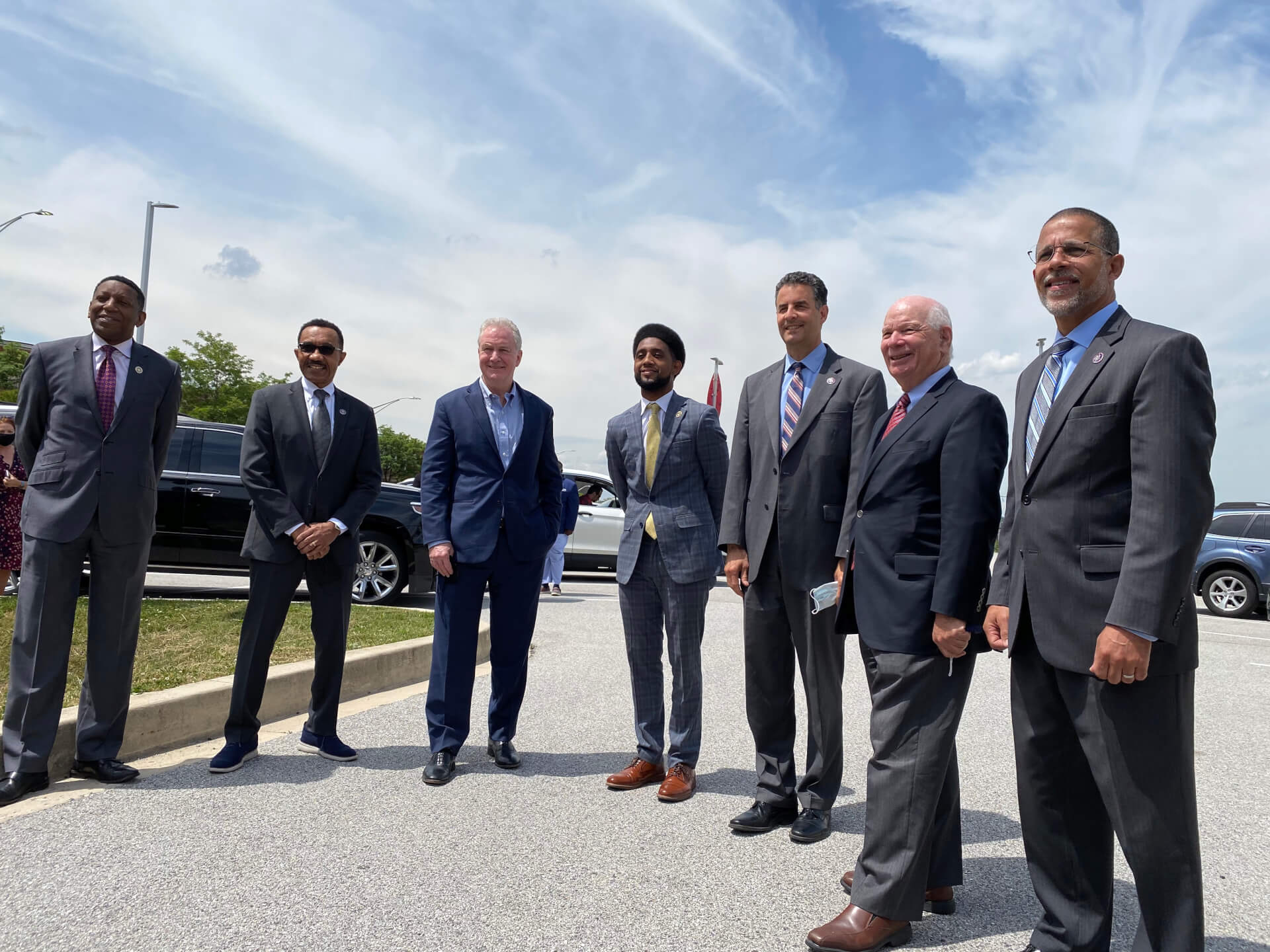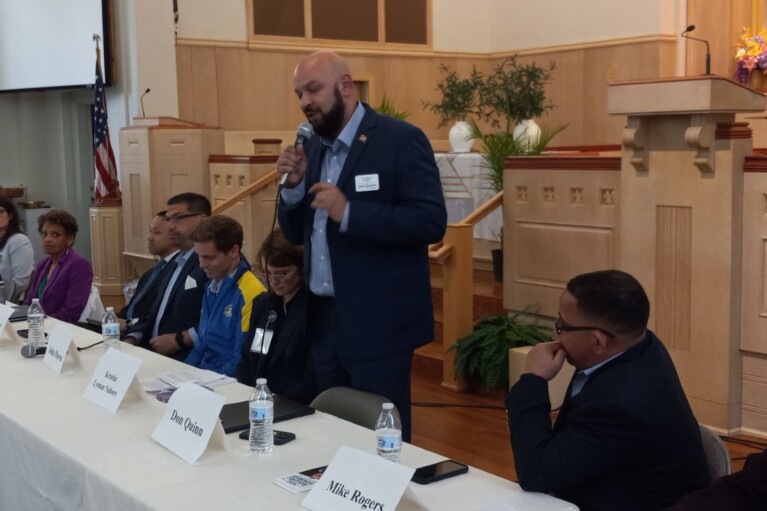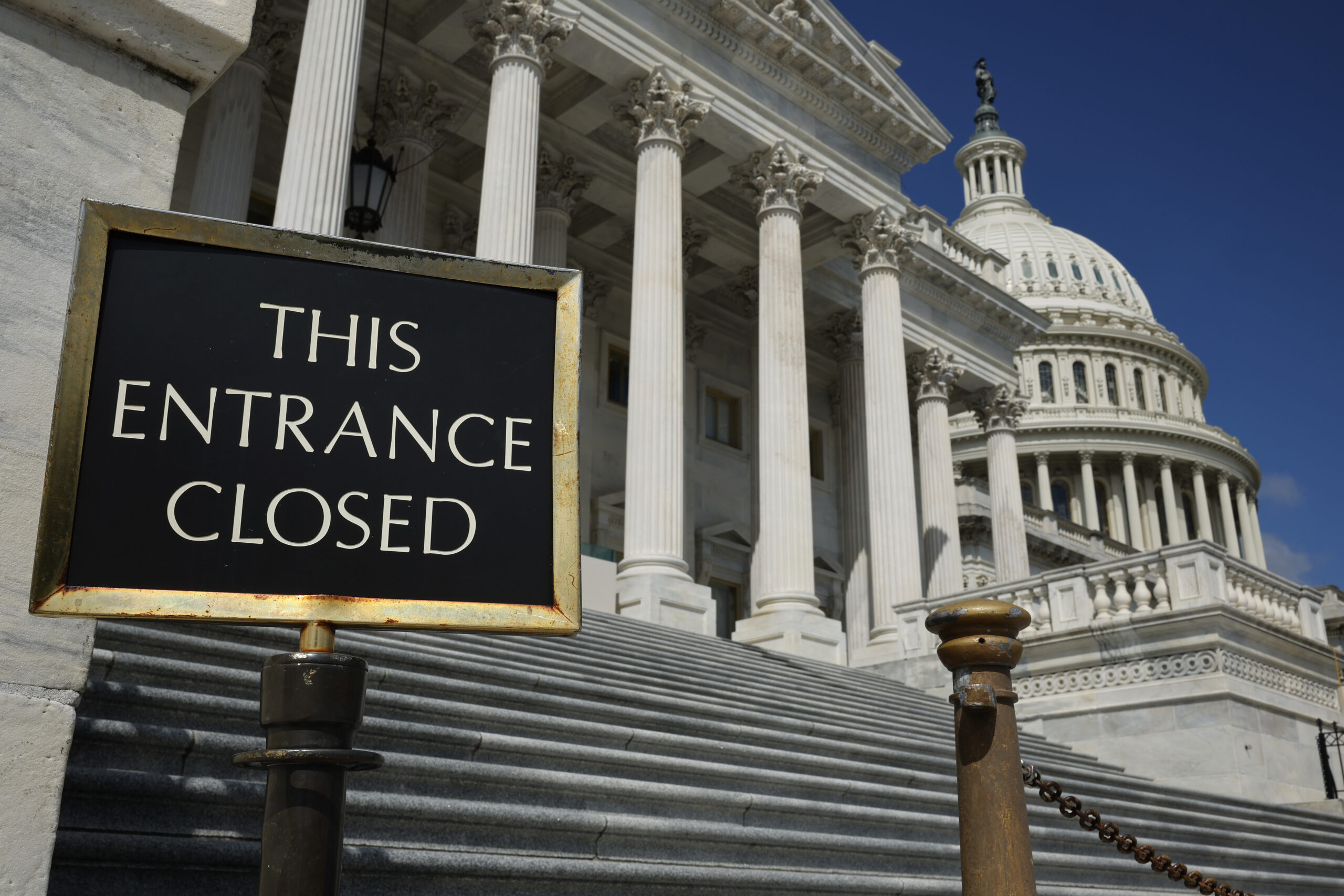Federal, State And Local Lawmakers Convene To Reinvest In Communities Divided By Unfinished Highways

Top leaders in Maryland and the city of Baltimore are united in support for legislation introduced to reconnect communities divided by infrastructure projects, like Baltimore’s Highway to Nowhere.
“This is a scar that serves as a stark example of the continuing harm done to the West Baltimore communities,” Sen. Chris Van Hollen (D) said at a news conference Monday held in front of a stub of I-170, the canceled interstate which has been dubbed Highway to Nowhere. “It’s also a stark example of the damage done in communities throughout the country for many federal infrastructure projects that were [abandoned] decades ago, and, especially, the impact on low-income communities.”
Van Hollen, Sen. Ben Cardin (D), U.S. Reps. Kweisi Mfume (D), Anthony Brown (D), John Sarbanes (D), state Sens. Charles E. Sydnor III (D-Baltimore County) and Antonio Hayes (D-Baltimore City), Del. Keith E. Haynes (D-Baltimore City), Baltimore City Mayor Brandon Scott (D) and Baltimore City Council President Nick Mosby (D) all showed at a news conference Monday in support of The Reconnecting Communities Act.
Sponsored by Van Hollen, Cardin, Senate Majority Leader Charles E. Schumer (D-N.Y.) and Sens. Tom Carper (D-Del.), Alex Padilla (D-Calif.) and Chris Coons (D-Del.), the bill would establish a grant program through the Department of Transportation to assist communities across the country in identifying and removing — or retrofitting — highway infrastructure projects that inhibit transportation and economic opportunity and exacerbate environmental woes, like the city’s Highway to Nowhere.
The “one-and-a-half-mile concrete gully,” as Van Hollen put it, running through West Baltimore displaced nearly 1,500 city residents, destroying 971 homes and 62 businesses for its construction.
Van Hollen said that he visited the Highway to Nowhere shortly after being elected to the Senate, seeking to continue the work that his predecessor, Sen. Barbara Mikulski (D), had successfully lobbied for during her tenure.
Mikulski managed to stop construction on a highway that would’ve cut through the entire city, “but they were not successful until after this one-and-a-half-mile segment had been built — not before the project split this community in two,” said Van Hollen.
Discriminatory infrastructure projects like Baltimore’s Highway to Nowhere aren’t unique to Maryland: several other primarily Black communities across the country have borne the brunt of incomplete highway projects.
“I grew up running these streets back and forth long before there was a highway that led to nowhere,” said Mfume. He said the communities disrupted by the unfinished project “used to be very vibrant.”
“Clearly, our joint effort, which is transformation, is aimed at uniting the communities split by this monstrosity of a highway, and it’s designed to bring about safe and usable open space that the people here to be able to enjoy in a united way, in a new and united Baltimore,” Mfume said.
Cardin called the unfinished highway “ill-conceived.”
“We need to correct the bad infrastructure that’s been done in the past and we must have transportation equity,” he said.
Scott reminded the delegation that where they stood was intended to be a construction site for the red line, a rail project which Gov. Lawrence J. Hogan Jr. (R) called “a wasteful boondoggle” when he canceled it in 2015.
Brown, who introduced the bill in the House, said the bill would provide communities the ability to engage with their elected officials about any proposed infrastructure projects that might disrupt their neighborhoods.
“You can only imagine, years ago when the planning and the design and the decisions were made to build this divisive highway, that the communities to our right and to our left here in West Baltimore — they weren’t involved,” he said. “Perhaps they didn’t have the capacity, or the experience or even the connections to be able to influence his traumatic and devastating division … that has changed the quality and character of this community. Well, no more.”
“This Highway to Nowhere was a huge mistake,” Brown continued. “But this is an opportunity — a transformational opportunity.”
Editor’s Note: This story was updated after an earlier version misidentified Del. Keith Haynes (D-Baltimore City).




 Creative Commons Attribution
Creative Commons Attribution